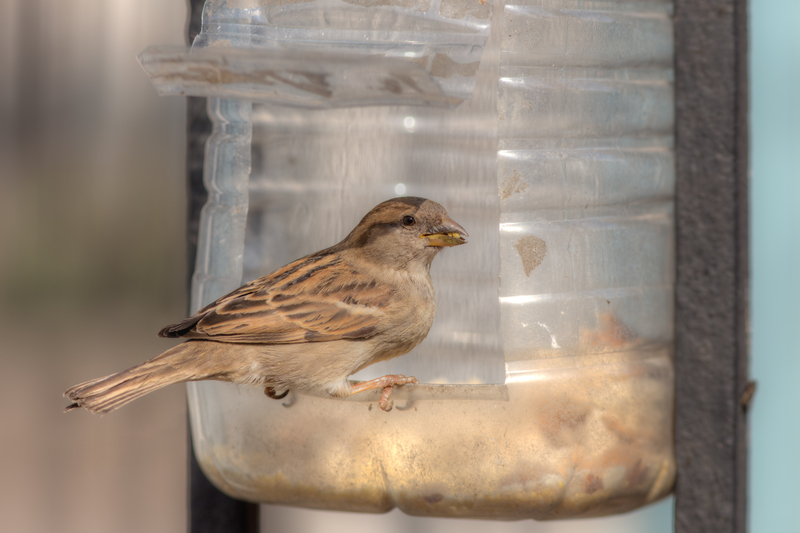The Art of Teaching Kids Environmental Respect
In today's rapidly changing world, the importance of environmental respect is undeniable. Instilling a sense of responsibility and respect for the environment in younger generations is not merely an option -- it is a necessity. The art of teaching children about the environment involves a blend of knowledge transmission, hands-on activities, positive reinforcement, and nurturing genuine connections with nature.

Why Early Environmental Education Matters
Children are naturally curious and open to new experiences. By exposing them early to the wonders of nature and teaching them the importance of preserving it, we set the stage for a lifelong commitment to environmental stewardship. The foundation for environmental respect is best laid in childhood, shaping attitudes and behaviors that persist into adulthood.
- Early exposure: Young minds absorb information quickly and are more likely to develop pro-environmental habits when introduced at a young age.
- Lasting impact: Environmental lessons learned in childhood are carried forward, benefiting communities and the planet as a whole.
- Empathy and responsibility: Teaching respect for the environment fosters empathy, responsibility, and a sense of global citizenship in kids.
The Role of Parents and Educators in Environmental Teaching
Both parents and educators play critical roles in shaping children's attitudes towards the environment. Modeling sustainable behavior at home and in school sets a standard for kids to emulate. Leading by example -- from recycling regularly to conserving water -- can significantly influence children's environmental behavior.
Key strategies for parents and teachers:
- Lead by example: Demonstrate environmentally friendly practices in daily life.
- Encourage questions: Support kids' natural curiosity by answering their questions about nature and environmental issues.
- Connect lessons to everyday life: Relate environmental teachings to familiar activities, like gardening, grocery shopping, or energy use in the home.
Effective Methods to Teach Environmental Respect to Kids
The process of teaching environmental respect is not confined to classrooms. It encompasses a wide array of interactive, real-world experiences that spark a child's imagination and foster a lasting bond with the natural world.
1. Hands-On Learning: Engaging the Senses
Children learn best when they are actively involved. Hands-on activities are a powerful tool for teaching environmental concepts.
- Gardening: Growing plants at home or in school connects kids to the earth.
- Nature hikes: Exploring local parks or green spaces helps children observe ecosystems firsthand.
- Recycling projects: Sorting recyclables or creating crafts from upcycled materials reinforce the value of reducing waste.
2. Storytelling and Environmental Narratives
Stories captivate children and make complex topics relatable. Books, movies, and documentaries about animals, habitats, and environmental heroes help convey the importance of protecting the planet.
- Read age-appropriate books on environmental topics to spark discussions.
- Watch educational documentaries together and talk about the themes explored.
- Share stories of local environmental champions to inspire action at home or school.
3. Encouraging Critical Thinking and Problem Solving
Environmental challenges require creativity and problem-solving skills. Encourage children to think critically about how their actions impact the environment and brainstorm solutions for real-world issues.
- Pose open-ended questions: What happens if people litter in the park? How can we save water at home?
- Set up simple experiments to demonstrate environmental concepts, such as testing soil erosion or water filtration.
4. Fostering a Sense of Wonder
At its heart, respect for the environment is rooted in love and appreciation for nature. Spend time outdoors regularly to help kids form emotional bonds with the natural world.
- Nature walks: Observe plants, insects, and animals and talk about their roles in the ecosystem.
- Bird-watching and stargazing: These activities encourage kids to see themselves as part of a greater universe.
The Building Blocks of Environmental Respect Education
Developing Environmental Awareness
Educating kids about environmental issues like pollution, climate change, and loss of biodiversity is crucial for cultivating environmental awareness.
- Use clear, simple language: Tailor explanations to your child's age and understanding.
- Link concepts to everyday life: Show how activities like excessive electricity use or throwing away plastic bottles contribute to bigger environmental problems.
Teaching Sustainability
Teaching sustainability means helping children understand the balance between using resources and preserving them for the future.
- Practice the 3 Rs: Reduce, Reuse, Recycle. Demonstrate how small changes in daily habits make a difference.
- Start a compost bin to show how organic waste can be turned into valuable fertilizer.
- Encourage energy and water conservation by turning off lights and faucets when not in use.
Promoting Environmental Empathy
Cultivating empathy for living beings and ecosystems leads to a more sustainable mindset. Actively discuss the interdependence of humans, animals, and plants.
- Volunteer for community clean-ups: Invite children to participate in local environmental activities.
- Support wildlife causes: Donate to wildlife organizations or adopt endangered animals symbolically.
Creating an Environmentally Respectful Home and Classroom
Modeling Eco-Friendly Lifestyles
Children observe and mimic adults. Creating a green home or classroom environment reinforces the values you seek to impart.
- Incorporate eco-friendly materials and products in daily routines.
- Display environmental posters and artwork to keep green concepts top of mind.
Setting Green Routines
Regular routines and rituals make sustainable behaviors second nature for children.
- Appoint kids as the family's or class's official "Energy Saver" or "Recycling Captain"
- Make weekly nature time -- hikes, park visits, or gardening -- a part of your schedule.
Encouraging Participation and Leadership
Give kids opportunities to take initiative in caring for the environment. Leadership roles boost engagement and accountability.
- Organize classroom or community recycling drives, led by students.
- Create student-led green committees or clubs to research and advocate for sustainable changes.
Overcoming Challenges in Environmental Education
Teaching environmental respect to kids can face obstacles, from lack of time to limited access to green spaces. However, creativity and resourcefulness can help overcome these barriers.
- Urban environments: Use potted plants, window gardens, or virtual nature tours if outdoor access is limited.
- Time constraints: Integrate environmental lessons into existing curricula and daily routines.
- Information overload: Focus on a few core concepts and build gradually to avoid overwhelming young learners.
Measuring Success: Signs of Environmental Respect in Kids
How do we know if children are truly learning environmental respect? Look for these signs of progress:
- Taking initiative to reduce, reuse, or recycle materials without being prompted.
- Questioning wasteful or harmful practices at home, school, or in the community.
- Expressing empathy and concern for plants, animals, and the well-being of the planet.
- Sharing eco-friendly knowledge with peers and family members.

Environmental Lessons That Last a Lifetime
Fostering deep environmental respect in kids creates positive ripple effects through families, schools, and communities. It equips children with the tools, mindsets, and values to face the environmental challenges of the 21st century -- and to become passionate, informed stewards of the earth.
Some ways to ensure that these teachings endure include:
- Continuously reinforce concepts through active participation and positive conversations.
- Celebrate eco-friendly achievements and encourage children's ongoing curiosity about the natural world.
- Stay informed about new environmental developments and share age-appropriate news and stories.
Conclusion: Passing on the Legacy of Environmental Stewardship
The art of teaching kids environmental respect is an ongoing journey -- one that requires patience, creativity, and dedication. By nurturing children's natural love for the earth and empowering them with knowledge, we lay the foundation for a more sustainable future.
Every small act counts -- whether it's a walk in the forest, a family recycling project, or a meaningful conversation about climate change. When we make environmental teaching a part of everyday life, we raise children who don't just respect the environment: they cherish it, protect it, and inspire others to do the same.
Let's work together to educate the next generation. Through creativity, compassion, and commitment, we can teach our children the true meaning of environmental respect -- and give them the tools to build a greener, brighter world.